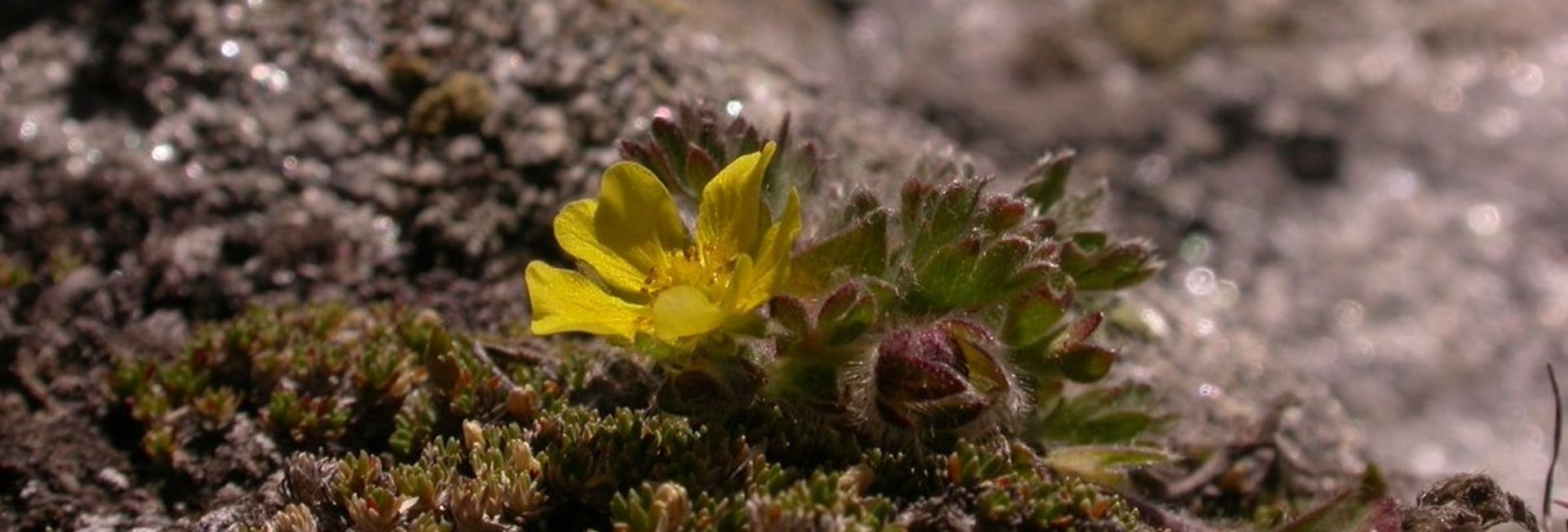
Gletscher-Fingerkraut
Potentilla frigida Vill.
This large genus from the rose family is known in German as “Fingerkräuter”, literally “finger weed”. Most species have five-part leaves that are reminiscent of small hands with five fingers. The 300 to 500 species of this genus thrive particularly in the mountainous parts of the northern hemisphere.
If you want to find the Glacier Cinquefoil, you have to look carefully and bend down to the ground from time to time, as this is a dwarf species. Specialist literature would suggest the plant can grow up to 10 cm, but on the Gornergrat it usually “sticks” to the ground and barely grows larger than 2 cm. It is worth taking a closer look at the cheerful, glowing flowers. On closer inspection, the shaggy leaves turn out to be silky, shiny fur-like structures. Unlike most cinquefoils, the leaves of the Glacier Cinquefoil only comprise three parts.
Facts and Figures
The Glacier Cinquefoil is a true survival artist. It is usually found in very nutrient-deficient, dry areas where snow is swept away in winter and where the temperature can sometimes drop to -20° C or even lower. This dwarf plant finds it difficult to compete with larger plants – which is why it is usually found in patchy grassland where only a few other species thrive.
Territory
The Glacier Cinquefoil grows naturally throughout the Alps and the Pyrenees. This dwarf species is typically found in Switzerland growing in sedge grassland, particularly in the main Alpine ridge. On the Gornergrat, this otherwise not very common species can be seen regularly, growing in larger populations. more information